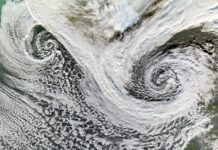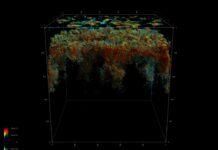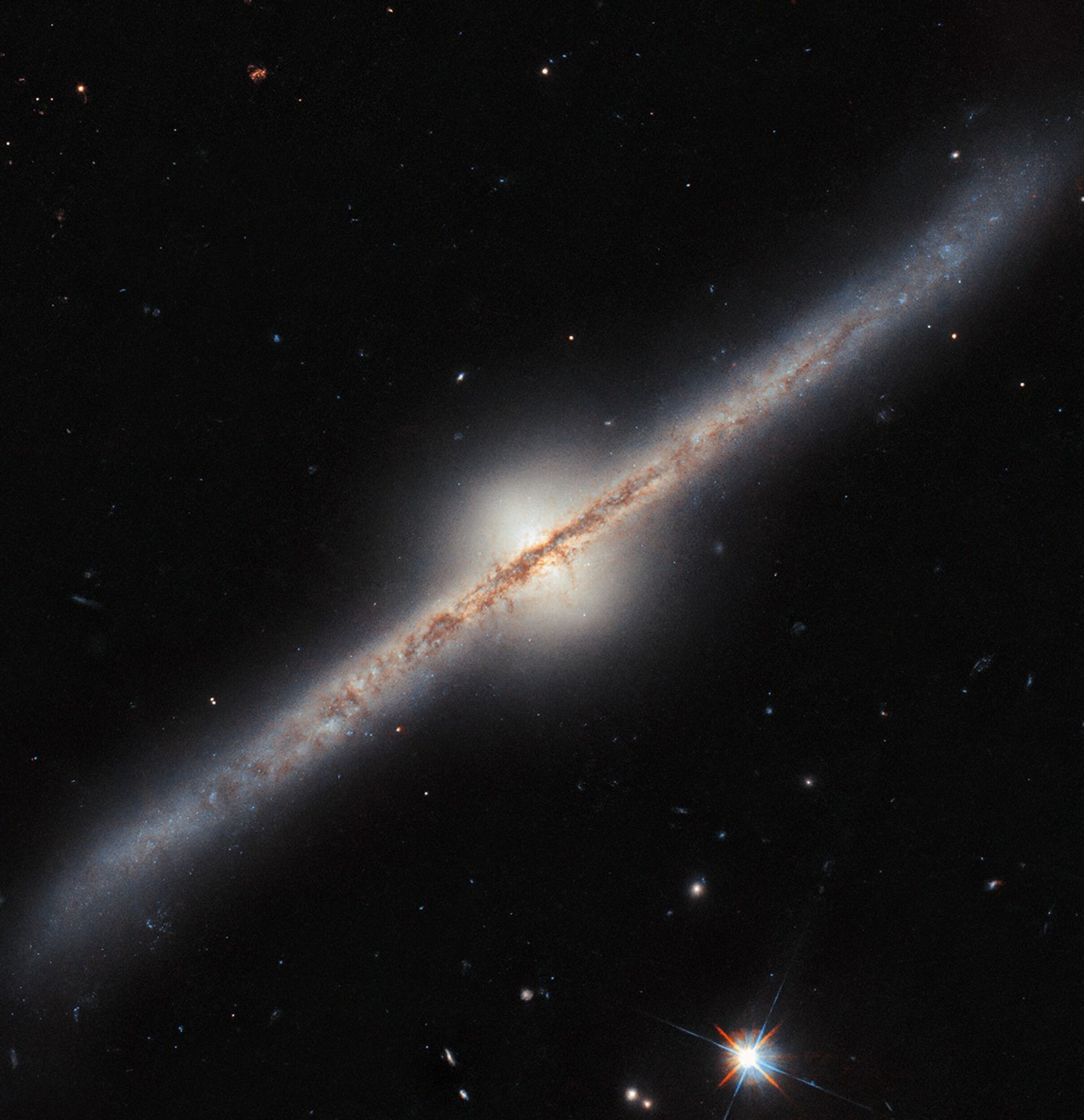A Unique View of UGC 10043: Unveiling the Secrets of an Edge-On Spiral Galaxy
When observing the universe, astronomers often come across intriguing phenomena that challenge our understanding of cosmic structures. One such fascinating celestial object is the spiral galaxy known as UGC 10043. What makes this galaxy particularly captivating is the edge-on perspective from which we view it. This unique angle transforms the galaxy’s disk into a sharp line cutting through space, revealing intricate details of its composition and behavior.
Understanding the Edge-On Perspective
In astronomy, viewing a galaxy edge-on means observing it from a side perspective, as opposed to looking directly down from above. This vantage point provides a clear glimpse of the galaxy’s disk, appearing as a sharp line slicing through the cosmos. Along this line, thick bands of dust form prominent clouds that obscure much of the galaxy’s luminous glow. These dust lanes are an essential feature of spiral galaxies, often housing star-forming regions and adding to the galaxy’s overall structure.
If we could change our viewpoint and look down from above UGC 10043, the dust would appear scattered throughout the galaxy, likely tracing the paths of its spiral arms. Such a view would offer a more comprehensive understanding of the galaxy’s layout and dynamics, but the edge-on perspective has its own unique advantages. It allows astronomers to study the distribution and effects of dust with greater clarity, providing insights into the galaxy’s evolutionary history.
Star Formation Amidst the Dust
Despite the dust’s obscuring nature, UGC 10043 is home to several active star-forming regions that shine brightly from behind the dark clouds. These regions are crucial for understanding the galaxy’s current state of development and its potential for future growth. Star formation occurs when dense areas within the dust clouds collapse under their own gravity, igniting nuclear fusion and giving birth to new stars.
The presence of these vibrant star-forming regions indicates that UGC 10043 is a dynamic and evolving galaxy, continuing to produce new stars despite the challenges posed by its dense dust lanes. This activity plays a significant role in shaping the galaxy’s appearance and influencing its long-term evolution.
The Galactic Bulge: A Distinctive Feature
One of the most striking elements of UGC 10043 is its prominent galactic bulge. This feature is a glowing, almost egg-shaped region that rises well above and below the galaxy’s disk. In spiral galaxies, the bulge is a common structural component, containing stars that orbit the galactic center on paths that extend above and below the rotating disk.
The bulge of UGC 10043 is unusually large compared to the size of its disk. This characteristic suggests that the galaxy may have undergone interactions with a nearby dwarf galaxy, siphoning material from its smaller neighbor. Such an interaction could contribute to the bulge’s growth and potentially explain why the disk appears warped, bending upward at one end and downward at the other.
The Impact of Galactic Interactions
Galactic interactions, such as the one possibly experienced by UGC 10043, are relatively common in the universe. When galaxies come into close proximity, their gravitational forces can cause them to exchange material, distort their shapes, and even trigger bursts of star formation. These interactions are a vital aspect of galactic evolution, often leading to significant changes in a galaxy’s structure and dynamics.
In the case of UGC 10043, the interaction with a dwarf galaxy may have influenced several aspects of its current appearance. The warped disk and enlarged bulge are likely consequences of this cosmic encounter, providing a fascinating example of how galaxies can evolve over time through external influences.
Good to Know: Spiral Galaxies and Their Characteristics
Spiral galaxies, like UGC 10043, are one of the most common types of galaxies in the universe. They are characterized by their rotating disks, which often contain spiral arms formed by density waves that trigger star formation. The presence of dust and gas within these disks is crucial for the ongoing creation of new stars, shaping the galaxy’s appearance and contributing to its growth.
In addition to their disks and spiral arms, spiral galaxies typically feature a central bulge and a surrounding halo of older stars. The interplay between these components determines the galaxy’s overall structure and behavior, making spiral galaxies a subject of extensive study in the field of astronomy.
Reactions and Reviews from the Scientific Community
The study of UGC 10043 and its unique characteristics has garnered significant interest from the scientific community. Astronomers and astrophysicists are keen to understand the processes driving the galaxy’s evolution and the role of interactions in shaping its current form. Research on UGC 10043 contributes to a broader understanding of galactic dynamics and the complex interplay between different cosmic structures.
Several studies have focused on analyzing the dust distribution, star formation rates, and the impact of potential galactic interactions within UGC 10043. These investigations help to unravel the mysteries of galactic evolution and provide valuable insights into the forces shaping the universe.
Conclusion
UGC 10043, with its edge-on perspective, active star-forming regions, and distinctive galactic bulge, offers a fascinating glimpse into the complexities of spiral galaxies. The study of this galaxy not only enhances our understanding of galactic structures and dynamics but also sheds light on the broader processes at work in the cosmos. As astronomers continue to explore UGC 10043 and similar galaxies, we gain a deeper appreciation for the intricate beauty and diversity of the universe.
For more detailed information and ongoing studies, you can visit the original website where this news was first reported. By staying informed about the latest discoveries and developments in astronomy, we can all contribute to the collective knowledge and appreciation of the wonders of our universe.
For more Information, Refer to this article.

































